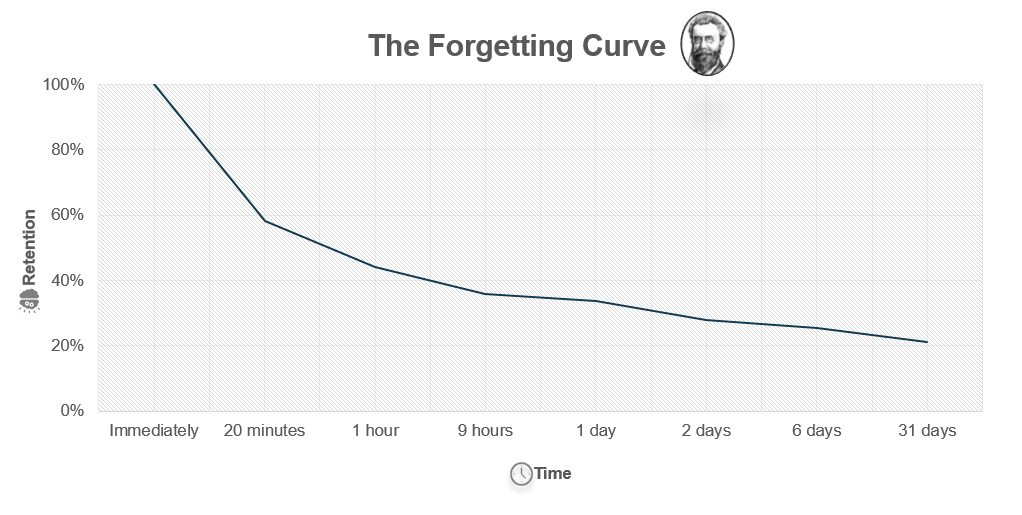How to Learn Faster and Retain More

I went through school being a very slow learner. The only approach I know to learn is rote learning. I'm one of those students who study hard, harder than most students in my cohort, but my grades would often be lower than theirs. I felt dumb because of this.
Data Science and Analytics is a fast-paced field. It's not clear to me what sparked the thought, but around the time I decided to pursue this career path, I started to ask myself how I could study smarter and not harder; how can I get the greatest result and return on my attention. Perhaps it's because I knew I had a lot to learn and felt the need to catch up; I felt like I was behind in my career. So, I set out to learn how to learn faster.
In this blog, I would like to share recommendations I picked up from Jim Kwik (his real name) on how to learn anything faster. Jim Kwik is a recognized world expert in brain optimization, memory improvement and accelerated learning.
Have you heard of the forgetting curve? Hermann Ebbinghaus, a German Psychologist, pioneered it. The curve describes the rate at which information is forgotten after it is initially learned. We forget 50% of what we learn within an hour and an average of 70% within in 24hrs; that's crazy, right?!

Luckily, there are techniques we can adopt to change the shape and stay ahead of the curve:
- Pomodoro Technique
- FASTER method
- Questions are the Answer
1. Pomodoro Technique
Our concentration ability ranges between 10-40 minutes; optimal is about 25 minutes. When we spend longer on a given task, we get diminishing returns on our investment because our mind starts to wander.
In the late 1980s, Francesco Cirillo developed a time management technique, Pomodoro Technique, that uses a timer to break work into intervals, typically 25 minutes in length, followed by a 5-minute break. Each interval is known as a Pomodoro, from the Italian word for tomato, inspired by Cirillo's tomato-shaped kitchen timer used at the time.
This technique works for reasons related to memory, specifically the primacy and recency effects. The primacy effect refers to how we're more likely to remember what is learned at the beginning of a learning session, class, presentation, or social interaction. The recency effect refers to remembering the most recently presented information best. So, by taking breaks, we create more beginnings and endings and retain more of what we're learning. Another plus side is that it helps us defer procrastination to the short breaks. It helps remove the temptation to check your phone or grab a snack during Pomodoro.
2. FASTER Method
FASTER is an acronym that stands for: Forget, Act, State, Teach, Enter and Review. It's a simple method for learning anything quickly, according to Jim Kwik. Here's the lowdown of each component:
F is for Forget
Three things to forget when you're learning:
- Forget what you already know
- Forget what's not urgent or important
- Forget your limitations
Forget what you already know. What we think we know can stand in the way of us taking in new information. Adopt a beginner's mind. Admittedly I don't always practice this, but when I do, I do retain more information, and I find myself being more engaged.
Forget what's not urgent or important. Many of us engage in multitasking because we think it improves efficiency. Guess what? Our brain can't multitask. What our brain is doing is switching gears between tasks or thoughts. Every time we make that switch, we pay the price- our time and energy. So if we aren't fully present, it'll be difficult for us to learn when our attention is split.
Forget about your limitations. We have many preconceived notions about ourselves, such as poor memory, being too old to learn anything new, being a slow learner, etc. Get those notions off your back. I know it sounds hard, but we need to try. These are notions we picked up; we weren't born with them. Our capabilities aren't fixed, and it's possible to learn anything. On the days I struggle with this point, I recall Kwik's remark: "If you fight for your limitations, you get to keep them." So, why fight for something not worth keeping?
A is for Act
Learning is not a passive experience, even though traditional education has trained us to think it is. Our brain learns a lot faster through creation compared to consumption. When we learn anything, we need to ask ourselves how we can become more active in our learning. Take notes, highlight key ideas, and complete exercises are some ideas you can apply.
S is for State
Learning is state dependent, and state refers to our emotions. When we tie a feeling to information, the information becomes more memorable.
Excitement, curiosity and fun help with retention. Low emotional energy does not. Think back to school. What was our predominant emotional state felt? Boredom, right? It's no wonder why many of us don't remember the periodic table.
Our thoughts and physiology highly influence emotion. To learn things quicker, we can hack our thoughts and physiology. We can shift our posture and pique different moods when we are learning. Sit or stand the way you would if you were energized and excited for what was coming. Get excited about how you will benefit from what you are about to learn and what it can do for you. Remember to consciously choose states of joy, fascination and curiosity over boredom.
T is for Teach
Teaching helps shorten the learning curve. Learning to teach the information to someone makes us pay closer attention. Also, when you teach something, we get to learn it twice: once on our own and then again through educating others.
E is for Enter
We enter essential things into our calendar. If we don't enter time to learn, there's a good chance it will not get done. It's very easy for the day to slip by with us "forgetting" to flex our body and brain.
R is for Review
An effective way to reduce the forgetting curve's effects is to recall what you learned with spaced repetition. Going over materials in multiple spread out sessions increases our brain's ability to remember them. To leverage this principle, before we begin a new session, take a moment to recall what you learned before. Our brain will give greater value to the reviewed content and prime our minds for what's to come.

The Questions are the Answers
In the book, Limitless, Jim Kwik mentioned that our senses gather up to 11 million bits of information from the world around us. If we process it all, it'll overwhelm us. So, our brain filters out a lot of information. It ignores unnecessary information, so the important stuff gets through. The brain's information gatekeeper is called the reticular activating system (RAS). The RAS is why we learn a new word and then start hearing it everywhere.
One of the ways we can guide our RAS are questions we ask ourselves. It tells our brain what information is important to us. In other words, it directs our focus. If we prep our minds with the right questions before we learn, we'll see answers everywhere. If you're stuck coming up with questions, here are three good ones to ask when learning:
- How can I use this?
- Why must I use this?
- When will I use this?
Before you start learning, study the questions you want to answer before each session, and you'll be better prepared to understand and remember what you learn.
That's a wrap! Next time you want to learn something, remember to apply any of these techniques. I guarantee that using one will improve your learning speed; take it from a recovering slow learner.


